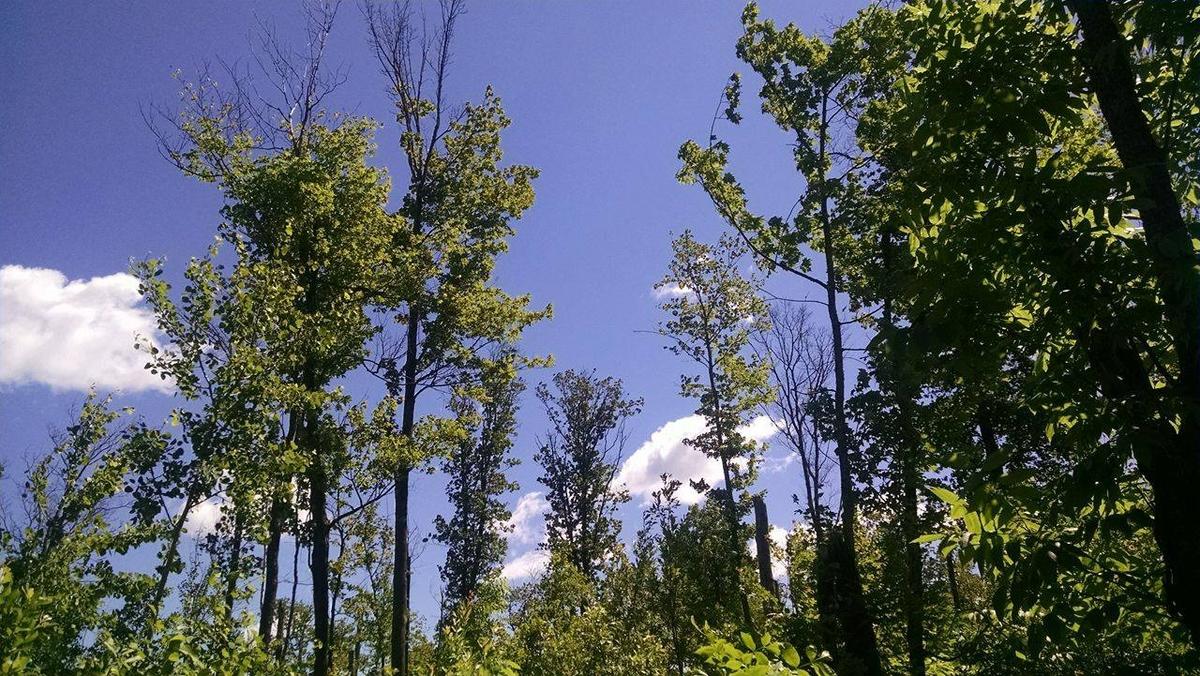Overview
In 2009, the west side of the 22.5 acres were harvested and the later the south side was salvaged cut, to eliminate two-lined chestnut borer in the stand. The objective after cutting was to create an even-aged stand that increased the stocking of northern red oak and maple, essentially making it a northern red oak stand through natural regeneration. The reduction of competitor species such as quaking aspen, ironwood and beaked hazel was meant to maintain the oak, paper birch and basswood components of the stand oak stocking. The placement of bud caps was a prescribed treatment, as well as using a brush saw to accomplish these tasks.
Silviculture Objective(s)
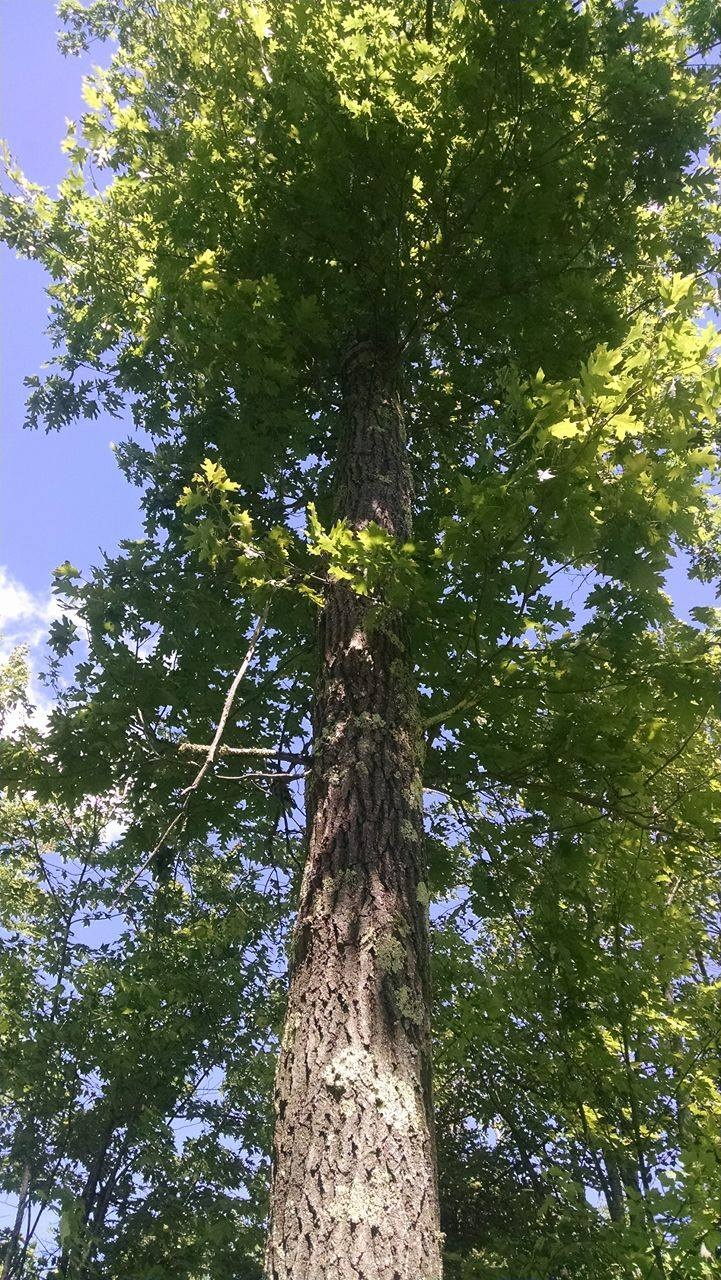
Figure 1: Oak overstory
This site has a suitable soil composition to support northern hardwoods, sugar maple, northern red oak, and other species as well, paper birch, red maple and basswood. The main objective is to regenerate northern red oak to 700 trees/acre and maple to 200 trees/acre in the stand. In order to increase the stocking of northern red oak, competitor species would be reduced through various actions. The damage to northern red oak seedlings and saplings from animals would be reduced with the protection of bud caps, as well as reducing disturbances to prevent susceptibility to diseases and infestation of insects that can occur when tree species are in a weakened state.
Pre-treatment stand description and condition
Stand establishment and management history:
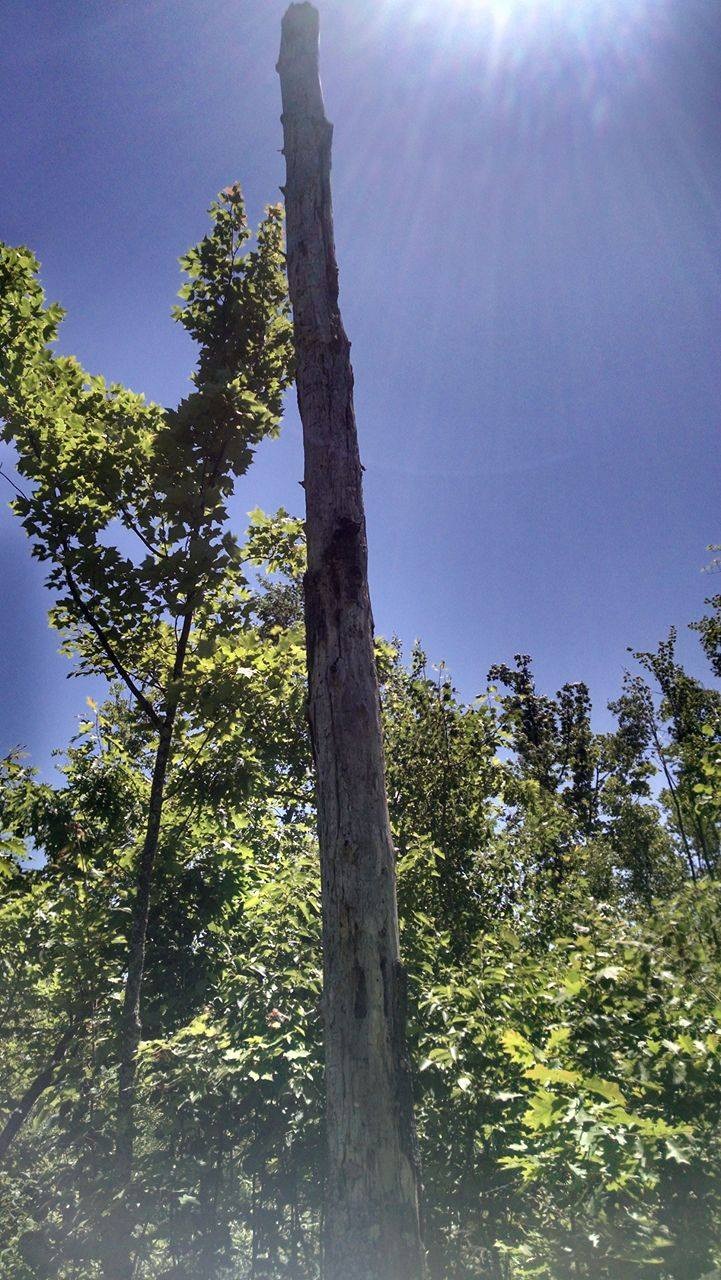
Figure 2: Snag
Pre-treatment stand establishment was in 2003. Over 70% of northern red oak became infested with the two-lined chestnut borer (TLCB). Stress conditions such as drought, construction and/ or defoliation made trees susceptible and allowed the native beetle to attack weakened oak trees. In 2000, there was an outbreak of Forest Tent Caterpillars (FTC) in the Hill City region. FTC defoliated the northern red oak species in the stand and made them susceptible to the two-lined chestnut borer. TLCB can infest all oak trees in MN, but prefer northern red oaks (MN DNR). To manage TLCB, a salvage cut was prescribed at the stand age of 65 years old, and later with treatments to promote northern red oak regeneration and limit competitor species.
Plant Community (NPC) and Growth Stage:
- MHn35
- Northern Mesic hardwood Forest
- Shrub layer- sugar maple, beaked hazelnut, balsam fir, chokecherry, pagoda dogwood, fly honeysuckle
- Sub canopy- sugar maple, ironwood
- Canopy- sugar maple, basswood, northern red oak, paper birch, quaking aspen
- Stagnation moraines-
- Parent material is fine textured till with loamy or sandy loamy layers
- Till is non-calcarcous
- Soil well-drained
- 0-55 Years Old
- Recovering forest dominated by paper birch and quaking aspen; less sugar maple, northern red oak, basswood
- Growth Stage
- 7 years old
- Northern Mesic hardwood Forest
- Overall well-drained soil
- 928C- Cushing soil
- 870C- Itasca soil
- 292- Alstad soil
Pre-treatment species composition:
Northern red oak, quaking aspen, paper birch, red maple, ironwood, balsam fir, basswood, beaked hazelnut, sugar maple
Pre-treatment growth and stocking:
Table 1. Crop Tree Species Summary from Regeneration Survey 2015
| Crop species | Stock (%) | Trees/acre | Average height (ft) | Height range (min) | Height range (max) | Damage type |
| Northern red oak | 40 | 375 | 7 | 1 | 14 | Deer browsing |
| Basswood | 30 | 250 | 5 | 3 | 10 | Deer browsing |
| Red maple | 50 | 300 | 5 | 2 | 9 | Deer browsing |
| Paper birch | 5 | 55 | 2 | 2 | 2 | Deer browsing |
Table 2. Competitor Tree Species Summary from Regeneration Survey 2015
| Competitor species | Stock (%) | Trees/acre | Average height (ft) | Height range (min) | Height range (max) |
| Ash | 5 | 175 | 1 | 1 | 1 |
| Aspen/Balsam Fir | 35 | 350 | 5 | 2 | 9 |
| Ironwood | 10 | 175 | 2 | 2 | 2 |
Pre-treatment forest health issues:
- 2000- Forest Tent Caterpillar (FTC) defoliated oak trees
- 2003- Active infestation of two-lined chestnut borer (TLCB); 70% of oak dead
- Presently- Heavy deer browsing on saplings and frost damage (deer population was low in 2010)
Silviculture Prescription
Silviculture Prescription – 2009-2015
- The prescription for the stand was a combination of a harvest/salvage cut, brush sawing and the placement of bud caps on northern red oak regenerants. The harvest was prescribed in the fall of 2009, to cut hardwoods and aspen, then in 2010, northern red oaks became infested with TLCB, and a salvage cut was prescribed to eliminate the disease. The entire stand was harvested for these specific species. The stand was 60 years old when harvested. Brushing sawing competitor species, such as aspen, ironwood and beaked hazel would allow favorable species, like northern red oak and maple to become established as the dominant species in the stand. This treatment was conducted July 2014 to October 2014 and prescribed for the 22.5 acres. After natural regeneration, oak seedlings were capped two different times, once in September 2014 and in October 2015, to reduce the damage done by deer browsing and extended throughout the entire stand.
- The harvest/ salvage cut was in hope to remove the TLCB and infected trees, as well as harvesting merchantable tree species, including northern hardwoods and trembling aspen. Species that were reserved during the cutting was balsam fir, ash and trees marked with orange paint. The appraisal was for 120 cords of trembling aspen, 180 cords of northern hardwoods, and 75 cords of red oak. Refer to Table 3. below for specifics and for harvest specifications refer to PDF “Harvest Specifications” in Supplemental Content.
- A regeneration survey was conducted in late spring of 2015. A species summary was collected for both crop species and competitor species. The stocking for northern red oak species and red maple was at 40% and 50% and aspen/ balsam fir was 35%. Based off the regeneration survey of 2015 for this stand, a second application of bud caps were prescribed as treatment in the fall of 2015. Refer to Table 4. below for specifics.
Table 3. Amount of Cords Harvested in Salvage Cut 2009
|
Type of Cordwood |
Amount of Cords (cd) |
Value per Cord ($) |
|
Northern Hardwoods |
180 |
9.70 |
|
Quaking Aspen |
120 |
17.00 |
|
Biomass |
None |
0.40 per thousand pounds |
|
Northern Red Oak |
75 |
4.00 |
Table 4. Crop and Competitor Species Summary from Regeneration Survey 2015
|
Crop Species |
Stock % |
Trees/Acre |
Competitor Species |
Stock % |
Trees/Acre |
|
Northern Red Oak |
40 |
375 |
Aspen/ Balsam Fir |
35 |
350 |
|
Paper Birch |
30 |
250 |
Green Ash |
05 |
175 |
|
Red Maple |
50 |
300 |
Ironwood |
10 |
175 |
|
Basswood |
05 |
25 |
|
|
|
What actually happened during the treatment
Treatment 1: Salvage Cutting 2009- 22.5 acres
- The sale was cut in October 2009 by the Guertin Inc. Logging was held off for a week or two due to precipitation and started back up in December 2009 when the ground was frozen. Conditions in September 2010 allowed logging to proceed and noticed TLCB in oak trees, only healthy oak trees were left, and then a large amount of precipitation in October 2010 slowed down progress. By September 2011, all trees were felled and removed from the landing. Random skidding was done to create extensive soil scarification. Once logging started they discovered that 70% of northern red oaks were infested with TLCB, an “Added Timber” sale was conducted and the harvest of northern red oak was added to sale for harvesting during the second cutting.
- Equipment used:
- Conventional skidder
- John Deer wheeled harvester
- Limber
- Slasher
- Equipment used:
Treatment 2: Brush Sawing to Release Species 2014- 22.5 acres
- In July 2014, a majority of aspen stems were brush sawed to release other species, mainly northern red oak and maple in the stand. The brush sawing of the stand was completed in October 2014. A free to grow tree was left every 15 feet, a 45% stocking of northern red oak and a 50% stocking of maple. When neither free to grow tree was present, aspen was left every 15 feet in the understory.
- Equipment used:
- Brush saw
- Equipment used:
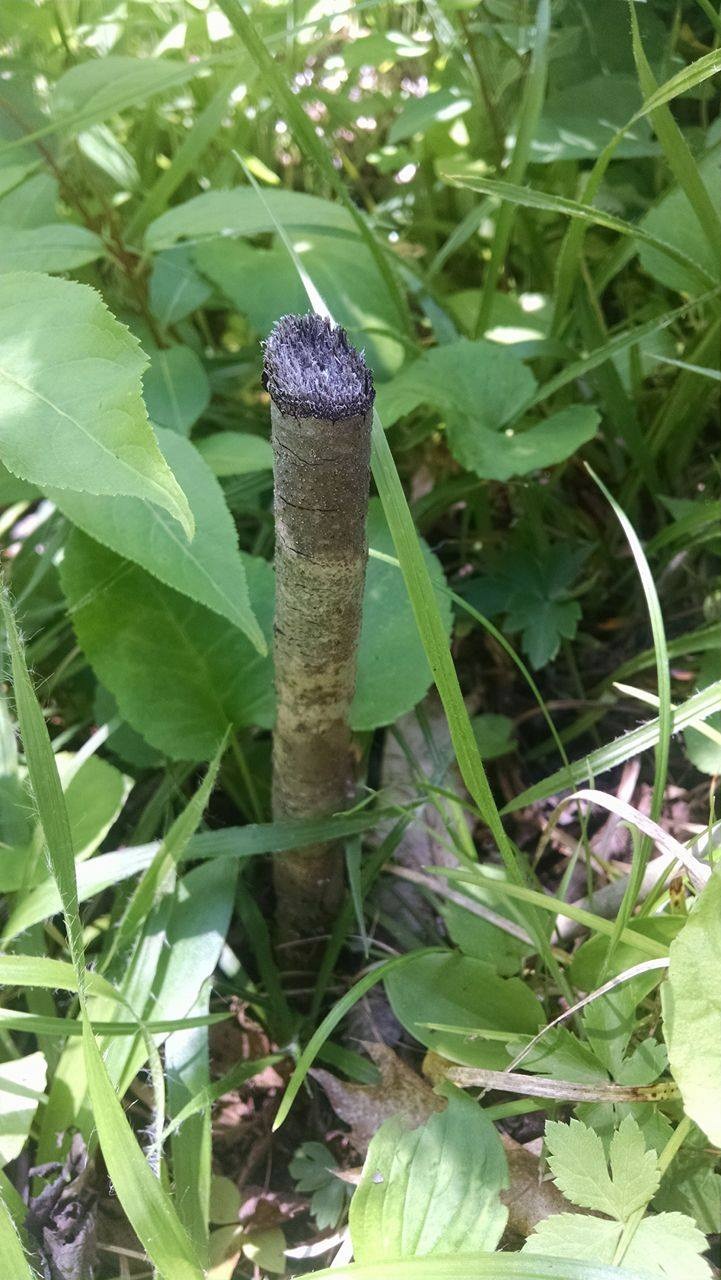
Figure 3: Brush sawed stem
Treatment 3: Bud Capping 2014 & 2015- 22.5 acres
- In September 2014 and in October 2015, bud caps were placed on northern red oak species to help regenerates reach above five feet. Buds caps are pieces of paper folded over the tip, held together by staples. Many regenerates below five feet with bud caps present in the northern half of the stand, were heavily damaged by deer browsing, and frost damage. Deer browsing damaged continued throughout the entire stand. Also, many bud caps slid off due weather conditions and improper assemblage.
- Equipment used:
- Paper
- Staples
- Equipment used:
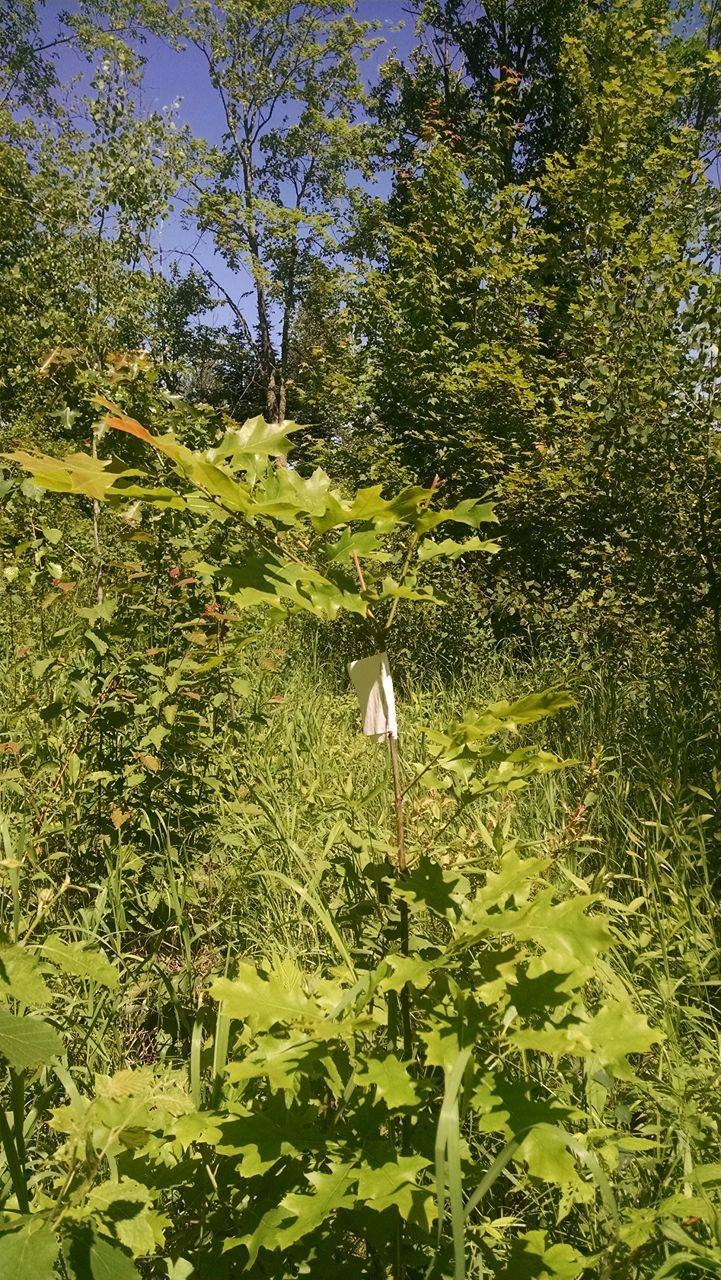
Figure 4: Red oak bud cap success
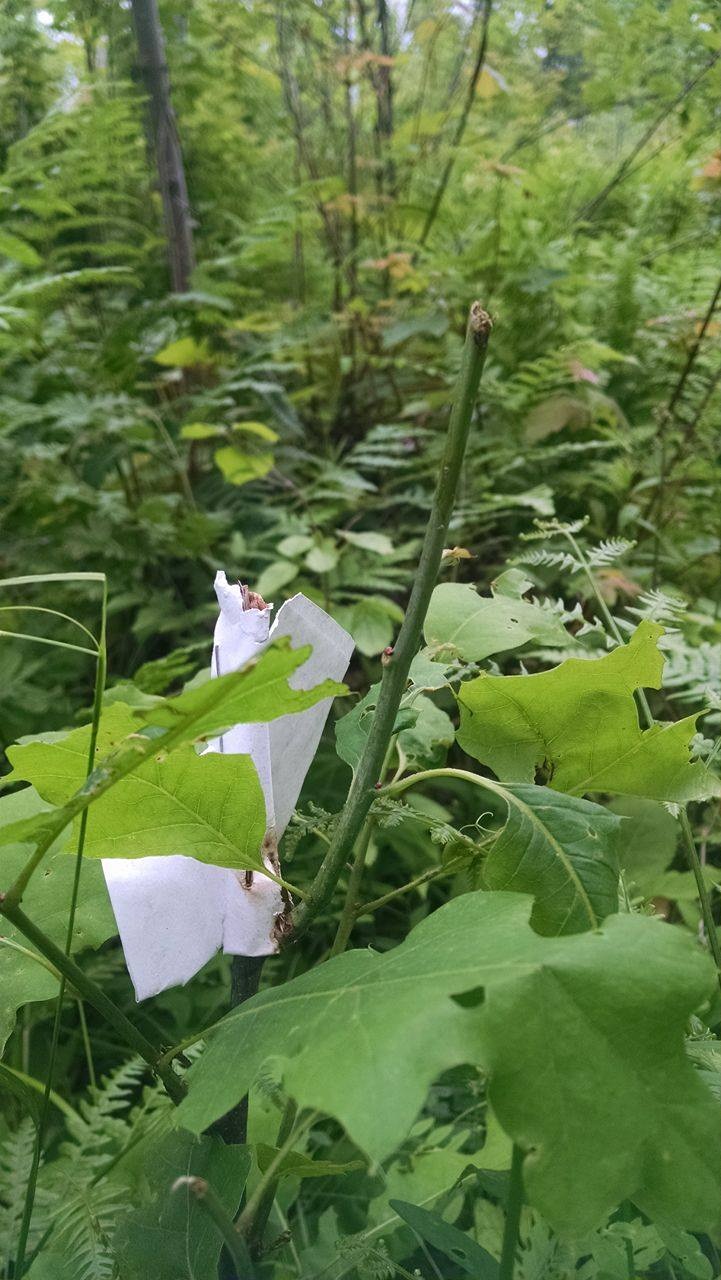
Figure 5: Bud cap and deer browse
Treatment 4: Oak Cages 2014 & 2015- 22.5 acres
- In September 2014 and in October 2015, metal cages were placed over northern red oak regenerates as well. This treatment was also used to reduce damage done from deer browsing.
- Equipment used:
- Metal cages
- Equipment used:
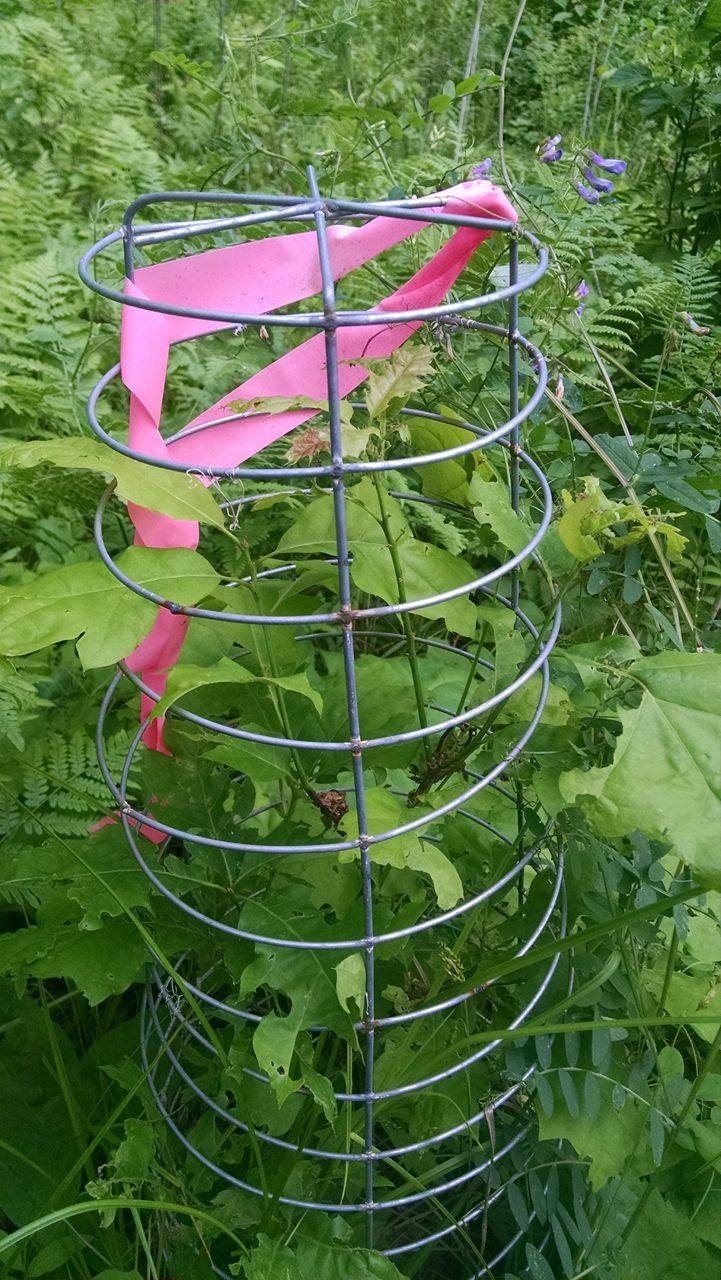
Figure 6: Caged oak
Post-treatment assessment
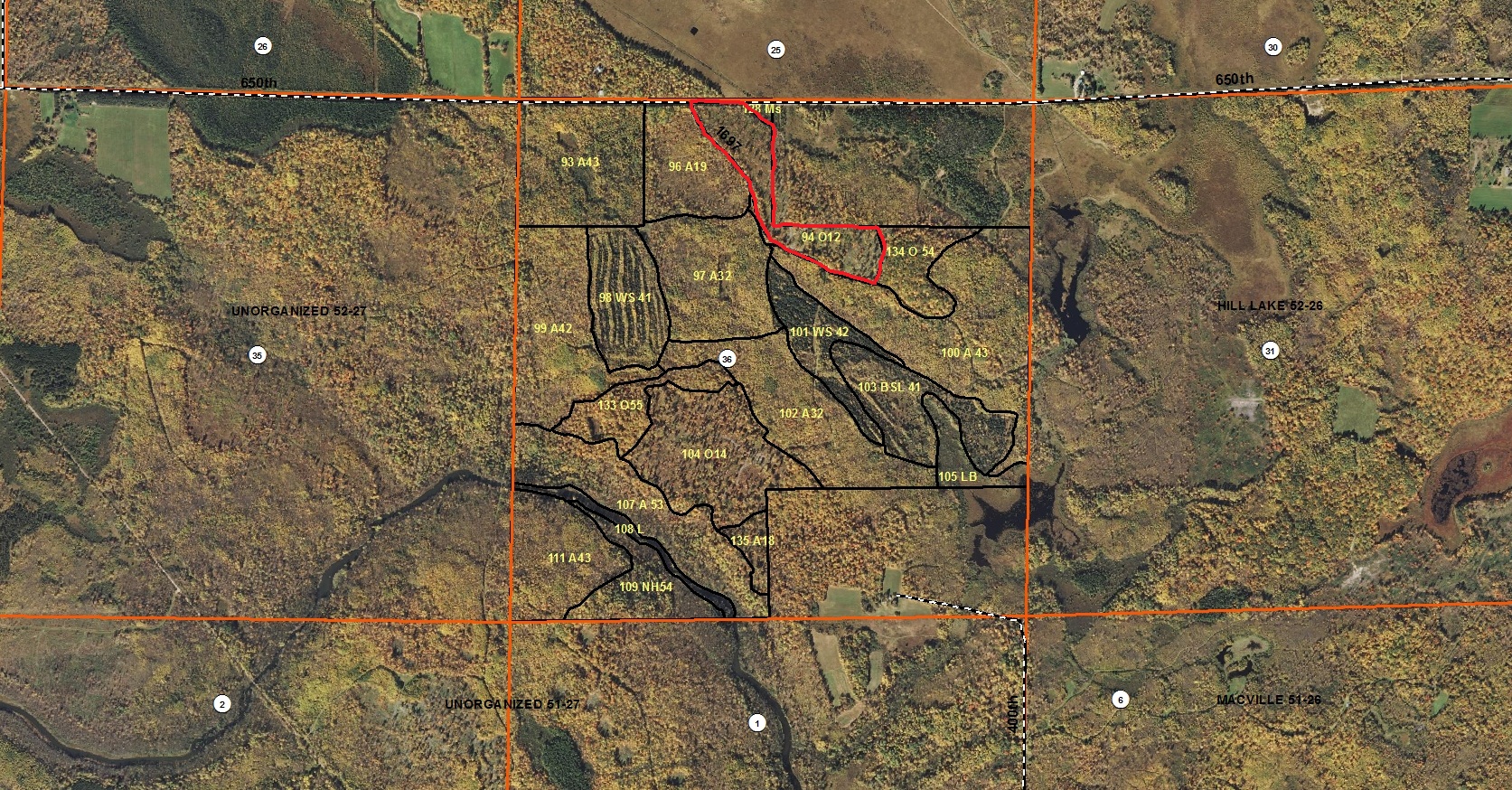
Figure 7: Red oak regeneration stand map
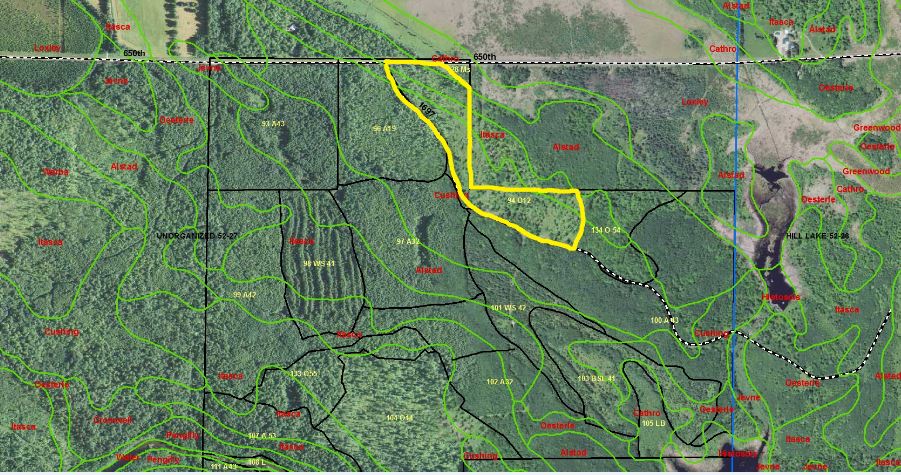
Figure 8: Red oak regeneration soils map
A 2016 regeneration survey showed the following figures are per acre. Based off these results below and the Regeneration Summary, TSI and a more intense brush sawing of quaking aspen would occur to allow northern red oak to become better established and thrive within in the stand against competitor species. As well as a larger distance to leave free to grow trees, and reduce the completion among species. Refer to PDF “Regeneration Summary” in Supplemental Content.
Table 5. Survey of Northern red oak stems per acre.
|
Northern red oak |
|
|
Regenerates (<1”dbh, <1’tall) |
275 stems per acre |
|
Seedlings (1”dbh, >1’tall) |
675 stems per acre |
|
Saplings (1-3”dbh) |
10 stems per acre |
|
Small trees (3-5”dbh) |
5 stems per acre |
|
Basal area |
13.5 square feet |
Table 6. Survey of all seedling species stems per acre.
|
Seedlings (<1’dbh, >1’tall) |
|
|
Quaking aspen |
2,475 stems per acre |
|
Paper-birch |
825 stems per acre |
|
Red maple |
775 stems per acre |
|
Northern red oak |
675 stems per acre |
|
Big-toothed aspen |
500 stems per acre |
|
Black ash |
350 stems per acre |
|
Sugar maple |
200 stems per acre |
|
Basswood |
25 stems per acre |
Plans for future treatments
- TSI
- Protection - Mechanical - Bud Caps
- Planned Onsite Visit - Regen - Regen Survey
- Planned Onsite Visit - Regen - Standards Check
Costs and economic considerations
Actual Action Cost Subtotal: $5,127.50
- Onsite Visit-Inventory-Re-Inventory, 22.5 acres
- Start Date: 4/13/2008
- End Date: 4/13/2008
- Costs: $87.50
- TSI Mechanical- Brush Saw, 22.5 acres
- Start Date: 7/01/2014
- End Date: 10/07/2014
- Costs: $2,025.00
- Protection Mechanical- Bud Caps and Metal Cages, 22.5 acres
- Start Date: 9/22/2014
- End Date: 9/22/2014
- Costs: $1,260.00
- Protection Mechanical- Bud Caps and Metal Cages, 22.5 acres
- Start Date: 10/19/2015
- End Date: 10/19/2015
- Costs: $1,755.00
Other notes
The site was first typed as a MHc26 forest; an error made by myself, but was later corrected to a MHn35 forest.
Summary / lessons learned / additional thoughts
The salvage cut created scarification in the soil, making it suitable for northern red oak natural regeneration. Also, from treatments described above, this resulted in an ample amount of regeneration of northern red oak than years in the past and other sites that were heavily browsed by deer. The bud caps and bud cages were not a success in every case but overall allowed northern red oak to become established as one of the predominant species in the understory. With a larger range of 14 feet for free to grow trees, would reduce the thick understory layer of competitor species allowing northern red oak to thrive and have more success.
This case study was developed with support from the United States Department of Agriculture's National Institute for Food and Agriculture (USDA-NIFA), Renewable Resources Extension Act (RREA). Project #MIN-44-E02, principal investigator Eli Sagor, University of Minnesota.
Supplemental content
